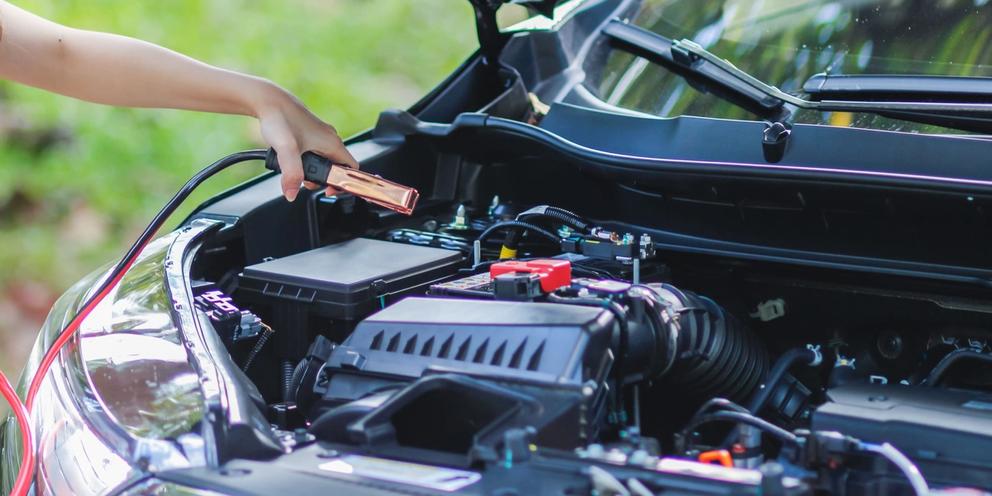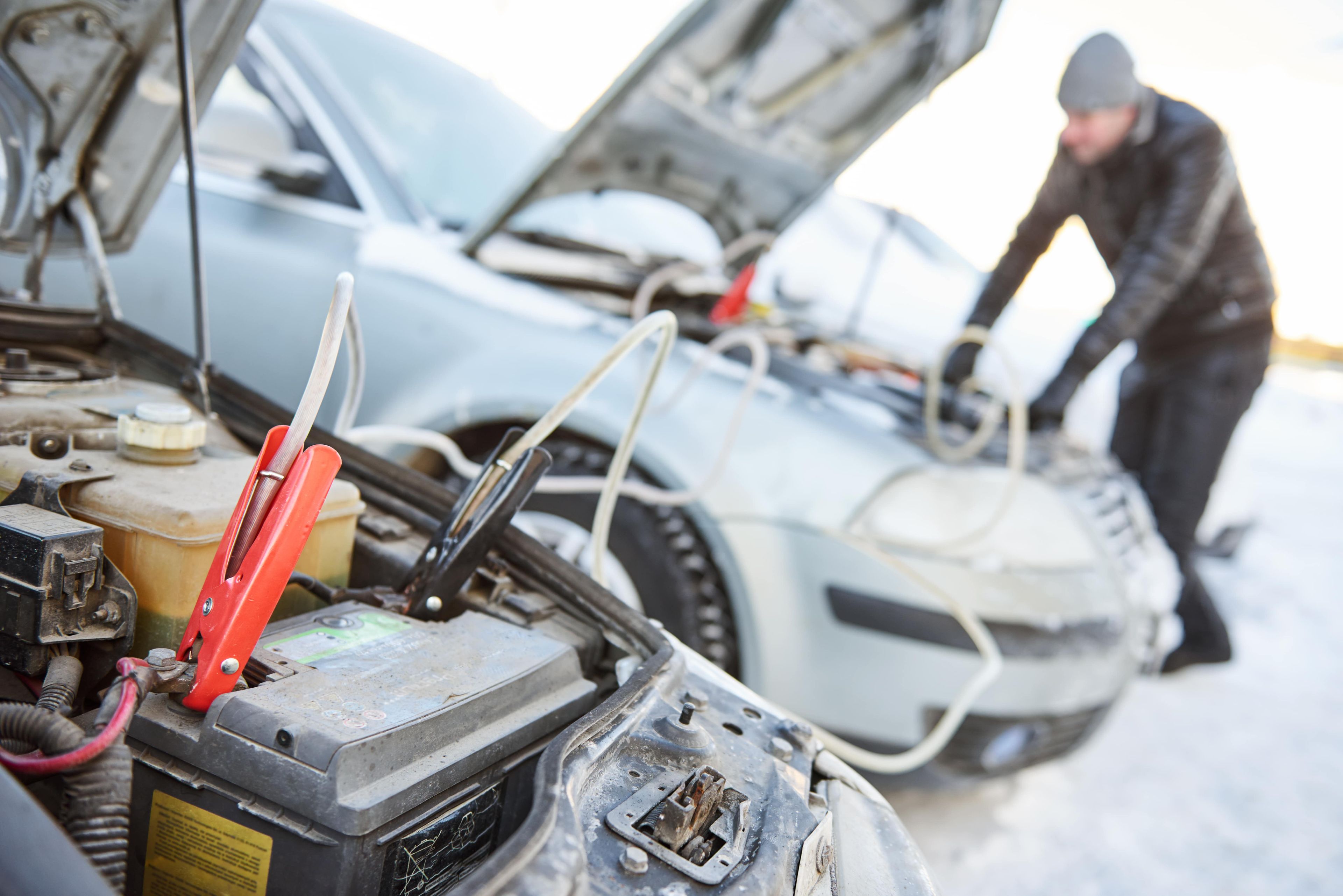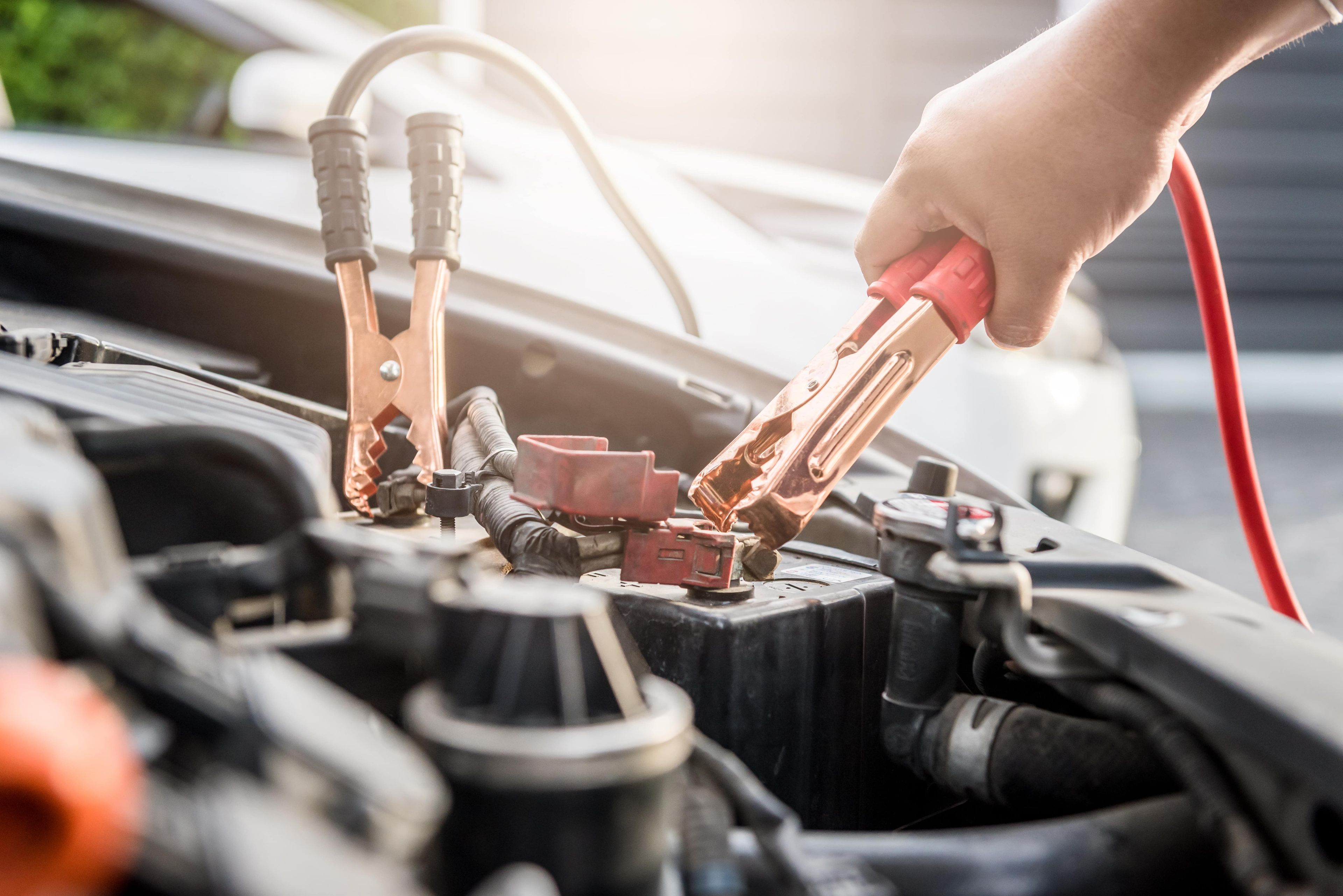
How to Jump a Car
A dead car battery can be a frustrating and unexpected problem, but knowing how to jump-start your car can save you time and get you back on the road. Jumping a car for the first time seems intimidating for most people. Car batteries are dangerous, and placing the cables in the wrong position can have serious consequences. Following simple steps can ensure you do everything correctly to restart your car safely. Knowing how to jump a car is a valuable skill. Instead of waiting for a mechanic to help you, you'll be able to start your vehicle with the help of another car.
Main Article Image Source: Korawat Photo Shoot/Shutterstock.com
Protect Your Car Battery with Preventative Maintenance
Performing regular car maintenance and cleaning the battery with a paste made from water and baking soda can prevent it from draining more often than it should. Coating the battery terminals in a corrosion-resistant spray would also help. Ensure that the battery housing is securely tightened, as shifting during transit can cause the battery's cables to disconnect.
You must also protect your car's engine and battery from the elements. Intense heat can cause the fluid in a battery to evaporate, damaging its internal structure and weakening its power. Investing in a custom car cover is an excellent way to protect your car from extreme weather. Our Platinum Shield car cover is a durable and resistant outdoor cover. It features a silver external layer that reflects UV rays and an insulating core layer, which can help to reduce your engine temperature when parked outdoors.
How to Jump a Car in 7 Simple Steps
What You'll Need:
- A set of jumper cables
- A functioning vehicle with a charged battery (known as the donor car)
- Safety gloves and goggles (optional but recommended)
Learning how to jump start a car can be done in these seven easy steps. The process involves using someone else's car and battery to restart your own. You'll connect both batteries with jumper cables and start the car's engine with the functioning battery; this should recharge the dead car battery. If you are already aware that your battery may not have enough power to start your vehicle, a trickle charger (a type of battery charge that slowly charges the battery over a more extended period) can be used to charge your battery and is something that would make a good addition to your tools.
Safety Precautions
- Inspect the Batteries: Check both batteries for visible damage, such as cracks or leaks. If you notice any damage, do not proceed with the jump start.
- Turn Off Both Vehicles: Ensure both vehicles are completely off, with the keys removed from the ignition.
- Keep Cables Clear: Make sure the jumper cables do not touch each other during the process.
- Check the Owner's Manual: Some vehicles, especially hybrids or electric cars, may have specific jump-starting procedures.
1. Prepare the Cars
Always keep jumper cables in your car's trunk if you need to start your car or help someone else jump start their vehicle. If you already have jump cables, all you'll need to do is find someone willing to assist you with your car. Park the donor vehicle close to the car with the dead battery, ensuring the two batteries are within reach of the jumper cables. Avoid letting the vehicles touch. It is also a good idea to ensure the parking brake is engaged during this process, especially if you have a manual transmission.
2. Locate the Batteries
Open both car hoods and locate the battery in each car. Most car batteries are fitted in the front of the vehicle and to the side of the engine. In some cars, like luxury sports cars and vintage models, the battery is located in the center or back for better weight distribution. Identify the positive ("+" usually red) and negative ("-" typically black) terminals on each battery.oth batteries with the jumper cables.

Source: Dmitry Kalinovsky/Shutterstock.com
3. Place the Cables
Check that they are clean and free of corrosion. If corrosion is present, it might prevent you from starting your car.
When connecting the cables, follow this sequence carefully to connect the cables:
- Red to Dead: Attach the red (positive) clamp to the positive terminal on the dead battery.
- Red to Donor: Attach the other red (positive) clamp to the positive terminal on the donor battery.
- Black to Donor: Attach the black (negative) clamp to the negative terminal on the donor battery.
- Black to Ground: Attach the final black (negative) clamp to an unpainted metal surface on the car with the dead battery (e.g., a bolt or engine block). Avoid connecting it directly to the negative terminal to reduce the risk of sparks.
4. Start the Donor Vehicle
Start the donor car's engine and let it run for a few minutes, allowing the dead battery to charge slightly.
5. Start the Dead Vehicle
Attempt to start the car with the dead battery. If it doesn't start immediately, wait a few more minutes and try again.
6. Remove the Cables
Once the dead vehicle starts, carefully disconnect the jumper cables in the reverse order:
- Remove the black (negative) clamp from the grounded metal surface.
- Remove the black (negative) clamp from the donor battery.
- Remove the red (positive) clamp from the donor battery.
- Remove the red (positive) clamp from the previously dead battery.

Source: Oyls/Shutterstock.com
7. Let the Engine Run
Allow the newly started car to run for at least 15-20 minutes to recharge the battery fully.
Troubleshooting Tips
- Car Won't Start: Check the cable connections to ensure they are secure. If the car still doesn't start, the battery may be too far gone to hold a charge, or there may be another issue with the vehicle. A possibility is a bad starter, the part of the car that takes a large amount of voltage from the battery to start the car initially and is only used upon starting, not once the vehicle is running.
- Frequent Dead Battery: If your battery dies often, consider getting it tested or replaced at a certified service center. A bad alternator, the part of the car that recharges the battery while the vehicle is running, might also be the cause.
Maintenance Tips to Avoid Dead Batteries
- Regularly check your battery terminals for corrosion and clean them as needed.
- Ensure your headlights and interior lights are turned off when the vehicle is not in use.
- Have your battery tested annually, especially before winter, when batteries are more likely to fail.
Every driver should know how to jump-start a car. Following these steps and safety precautions, you can return to the road quickly and safely. Keep a set of jumper cables in your vehicle for emergencies, and feel free to ask for help if you need clarification on the process.
Protect Your Car with a High-Quality Car Cover
Although jump starting your car is straightforward, prevention is the key to prolonging your car battery's life. A car cover can minimize your car's exposure to heat and extreme weather, protecting the exterior and preserving your car's internal components.
Updated